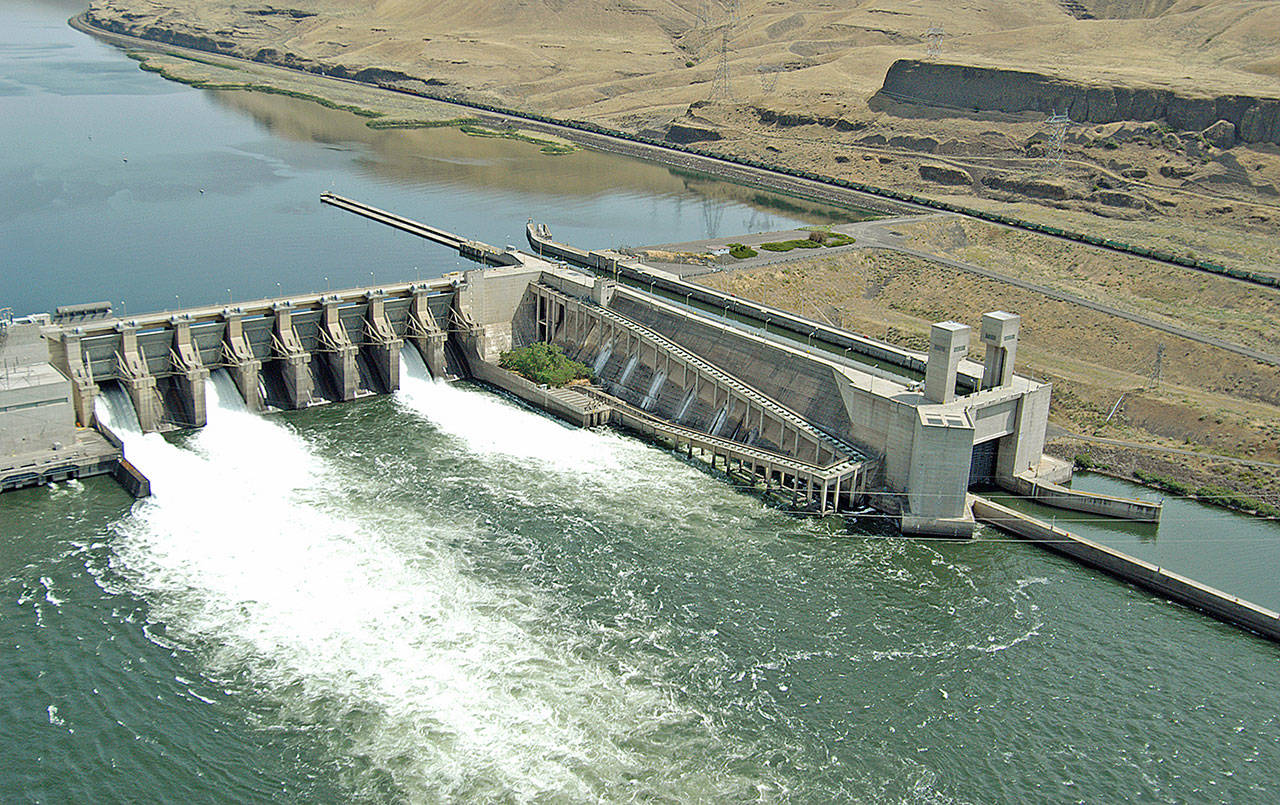The Grays Harbor PUD Board of Commissioners unanimously approved a resolution Monday in support of keeping the four hydroelectric dams on the lower Snake River in Eastern Washington.
The four dams are Ice Harbor east of Pasco, Lower Monumental near Kahlotus, Little Goose north of Dayton, and Lower Granite south of Colfax. In recent years, environmental groups have targeted the dams for removal because of their effect as an impediment to spawning salmon.
The resolution states, in part, “removal of elements of the Federal Columbia River Power System (FCRPS), including the Lower Snake River Dams would negatively impact the Grays Harbor Public Utility District’s responsibility to provide reliable, efficient, clean and affordable power to its customers.”
PUD Board President Russ Skolrood said the dams are beneficial for more than just power generation and impact areas far outside of the county.
“Removing the Lower Snake Dams is bad for the county and the region. Locally, they mean efficient energy at an affordable cost and greater energy reliability for Grays Harbor PUD customers,” said Skolrood. “But to the region, especially Eastern Washington and the Columbia River Gorge, the impacts are even greater. They impact the lives of thousands of families through irrigation, flood control, navigable waterways and outdoor recreation.”
PUD Board Secretary Dave Timmons said that without the energy generated by the dams, the reliable flow of energy from the dams in the Columbia and Snake river systems would be threatened. He cited a 2017 report from the Bonneville Power Administration.
“In January of 2017, when thousands of households across the Northwest needed power to stay warm, the output from wind generators varied from 3,000 to 74 megawatts. Those are not numbers you can plan on to reliably power homes and businesses,” said Timmons. “At that same time, the Lower Snake dams were generating nearly 1,300 megawatts. To me that shows that one source can be counted on, the other can’t.”
Proponents of dam removal often cite the impact the dams have on the salmon runs that Puget Sound orca pods rely on for survival. PUD Board Vice President Arie Callaghan says numerous studies dispute that claim.
“Operators of hydroelectric facilities spend billions of dollars on programs to allow dams to coexist with the environment. Those programs have made a real difference, which shows me those dams and salmon can coexist,” said Callaghan. “To remove those dams would be a shortsighted error, driven by emotion rather than the facts.”
According to the resolution, the Bonneville Power Administration “has spent nearly $17 billion on infrastructure and fish mitigation projects since 1978, including projects that address hydroelectric operations, habitat, hatcheries and harvest.”
Studies carried out by several groups, including NOAA Fisheries and the Environmental Protection Agency have shown that predation, ocean conditions, pollution and other factors have greater, far reaching effects on salmon over their lifespan than the relatively brief period they spend around hydroelectric dams.
The board’s resolution also highlighted the State Legislature passing a bill calling for a 100% emissions free power system, while at the same time environmental groups are seeking to dismantle parts of the infrastructure that make it possible.
“Washington is leading the way in clean energy because of hydro power and yet there are those who would seek to cut the knees out of that system,” said Skolrood. “That makes no sense to me. We have made huge strides toward a 100% clean energy industry. Why in the world would we want to start moving backwards?”


